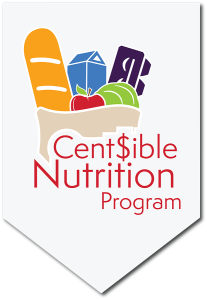Starting seeds indoors is a great way to get a head start and grow your own fruits and vegetables. After following the steps for starting seeds indoors, the next step is transplanting the seedlings outside. Seedlings are ready to transplant into individual pots or a garden when the plant has at least two true leaves, not counting the first seed leaves. First leaves are lowest on the stem, where empty seed casings often cling. True leaves come up above the seedling and look like a smaller version of the plant.
Supplies
- Soil
- Fertilizer
- Containers
- Popsicle sticks
Instructions
- Prepare a weed-free area, in either a pot or garden. Use a nutrient-rich soil or add fertilizer to the soil. This will help the plants grow.
- Dig small holes large enough for the seedlings. Check the seed packet to see how far apart to space plants. If using pots for your garden, visit our container gardening resources!
- If the seedling is in a small container, tip it on its side and ease out the plant. If the seedling is in a glove, carefully cut the fingers off the glove and take the seedling out. Keep the cotton ball attached to the seedling. Be careful not to damage the stem, as a damaged stem will likely die.
- Carefully lower a seedling into each hole. Gently cover the base with soil, but do not pack it down. Add a popsicle stick or other marker with a label to help you remember what it is.
- Water! Vegetables benefit from consistent watering. Fertilizer might be needed for some types of vegetables. Follow fertilizer label recommendation for applications.
Information summarized from UW Extension publications by Katie Shockley, Writer/Editor, University of Wyoming Extension Communications & Technology
Additional Resources
Check out these resources from UW Extension for tips on setting up your gardening and successfully transplanting seedlings.
- Preparing your garden plot video
- Transplanting seedlings video
- Barnyards & Backyards Live events on rural living, gardening, and small acreage farming


